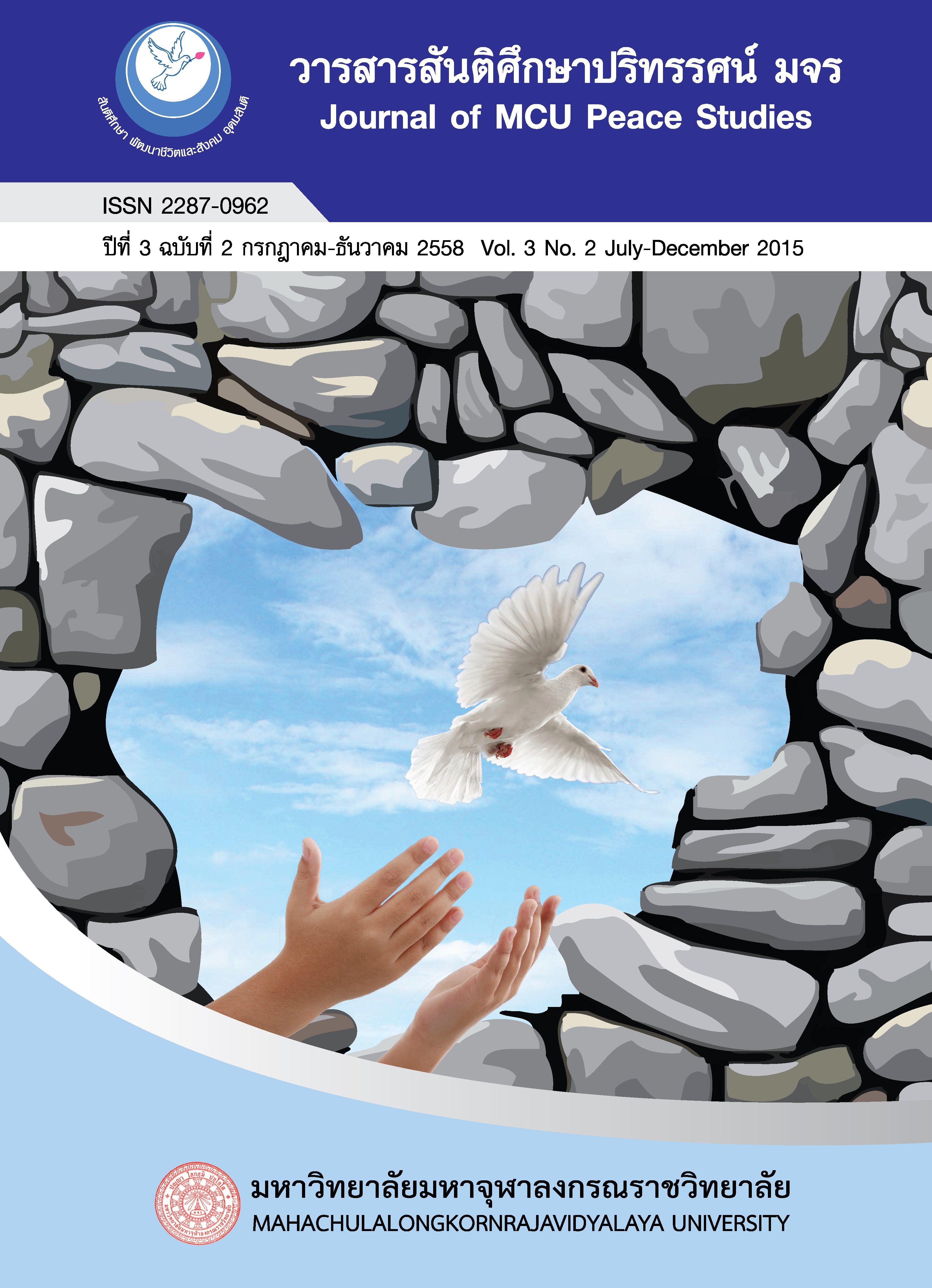GUIDELINES FOR FOREST CONSERVATION ACCORDING TO THERAVADA BUDDHIST TEACHINGS: A CASE OF HUG MUANG NAN FOUNDATION
Main Article Content
บทคัดย่อ
This research aims to study the guidelines for forest conservation according to Theravada Buddhist teaching and guidelines for forest conservation of Hug Muang Nan Foundation. This study is a documentary research. The data is studied from the Tipitaka, books, researches, dissertations, questionnaire and meeting of Hug Muang Nan Foundation’s members.
The results of this study reveal that Buddhist teaching on the forest, it can really teach and support a good and happy life for persons. Namely, persons, who receive the benefits from the limited resources, actually understand the importance of environments around them. For sustainable guidelines of forest conservation in Buddhist teaching, it points out that The Threefold Training (Tisikkha) – morality (Sila), concentration (Samadhi) and wisdom (Panna) – can be used to control persons’ behavior. Because whenever persons firmly know and understand the importance of natural resources and environments enough, there they can softly create, control and maintain the rules of natural resource usage together. Thereby, Sila (morality) can safely control the violators or wrongdoers, moreover it also can be a background of good consciousness and wisdom. For guidelines for forest conservation of Hug Muang Nan Foundation, it is on the Buddhist doctrines, they are: the loving-kindness (Metta), the middle path (Majjhima Patipada), the contentment (Santosa) and the love on natural resources to use sufficient forest resource.
Whereas, the guidelines for forest conservation in Buddhist teaching, it emphasizes the persons’ love and loving-kindness to be alive sufficiently, have a good vision for nature and not seek the benefits from forest resource. Therefore, if persons can absolutely pratise, the environmental crisis will not appear really.
The results of this study reveal that Buddhist teaching on the forest, it can really teach and support a good and happy life for persons. Namely, persons, who receive the benefits from the limited resources, actually understand the importance of environments around them. For sustainable guidelines of forest conservation in Buddhist teaching, it points out that The Threefold Training (Tisikkha) – morality (Sila), concentration (Samadhi) and wisdom (Panna) – can be used to control persons’ behavior. Because whenever persons firmly know and understand the importance of natural resources and environments enough, there they can softly create, control and maintain the rules of natural resource usage together. Thereby, Sila (morality) can safely control the violators or wrongdoers, moreover it also can be a background of good consciousness and wisdom. For guidelines for forest conservation of Hug Muang Nan Foundation, it is on the Buddhist doctrines, they are: the loving-kindness (Metta), the middle path (Majjhima Patipada), the contentment (Santosa) and the love on natural resources to use sufficient forest resource.
Whereas, the guidelines for forest conservation in Buddhist teaching, it emphasizes the persons’ love and loving-kindness to be alive sufficiently, have a good vision for nature and not seek the benefits from forest resource. Therefore, if persons can absolutely pratise, the environmental crisis will not appear really.
Article Details
รูปแบบการอ้างอิง
phiphitcharutham, P. (2016). GUIDELINES FOR FOREST CONSERVATION ACCORDING TO THERAVADA BUDDHIST TEACHINGS: A CASE OF HUG MUANG NAN FOUNDATION. วารสารสันติศึกษาปริทรรศน์ มจร, 3(2), 30–44. สืบค้น จาก https://so03.tci-thaijo.org/index.php/journal-peace/article/view/76571
ประเภทบทความ
บทความวิจัย
ทัศนะและความคิดเห็นที่ปรากฏในบทความในวารสาร ถือเป็นความรับผิดชอบของผู้เขียนบทความนั้น และไม่ถือเป็นทัศนะและความรับผิดชอบของกองบรรณาธิการ ยินยอมว่าบทความเป็นลิขสิทธิ์ของวารสาร


